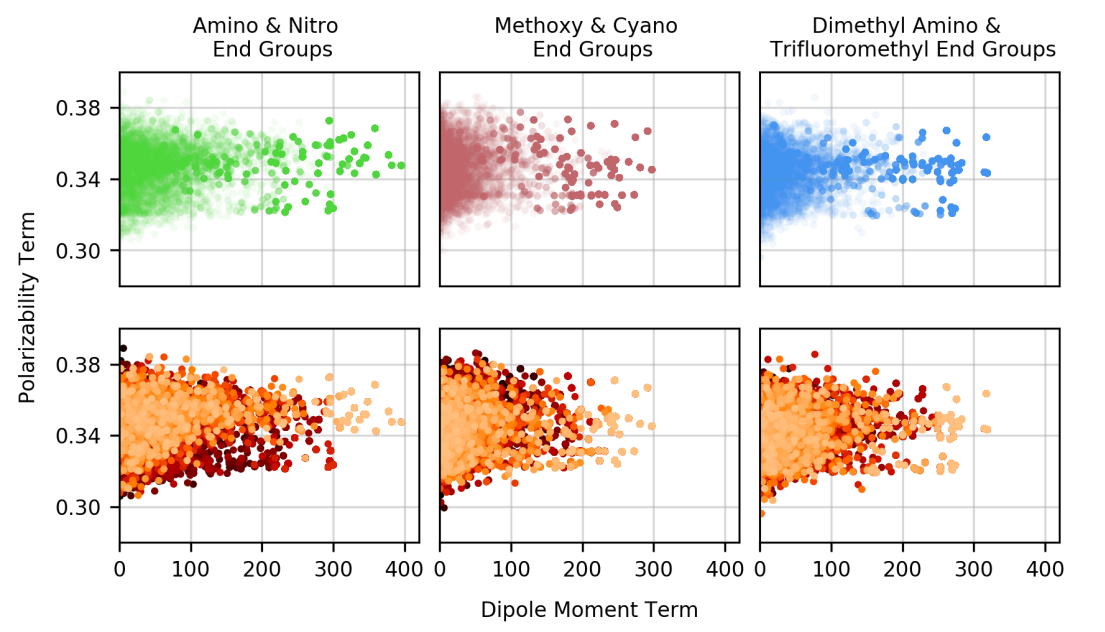Pareto Optimization of Oligomer Polarizability and Dipole Moment using a Genetic Algorithm
Danielle Hiener, Geoffrey R. Hutchison. “Pareto Optimization of Oligomer Polarizability and Dipole Moment using a Genetic Algorithm” J. Phys. Chem. A (2022), 126, 17, 2750–2760 Online
 High performance electronic components are highly sought after in order to produce increasingly smaller and cheaper electronic devices. Drawing inspiration from inorganic dielectric materials, in which both polarizability and polarization contribute, organic materials can also maximize both. For a large set of small molecules drawn from PubChem, a Pareto-like front appears between polarizability and dipole moment indicating the presence of an apparent trade-off between these two properties. We tested this balance in π-conjugated materials by searching for novel conjugated hexamers with simultaneously large polarizabilities and dipole moments with potential use for dielectric materials. Using a genetic algorithm (GA) screening technique in conjunction with an approximate density functional tight binding method (GFN2-xTB) for property calculations, we were able to efficiently search chemical space for optimal hexamers. Given the scope of chemical space, using the GA technique saves considerable time and resources by speeding up molecular searches compared to a systematic search. We also explored the underlying structure-function relationships, including sequence and monomer properties, that characterize large polarizability and dipole moment regimes.
High performance electronic components are highly sought after in order to produce increasingly smaller and cheaper electronic devices. Drawing inspiration from inorganic dielectric materials, in which both polarizability and polarization contribute, organic materials can also maximize both. For a large set of small molecules drawn from PubChem, a Pareto-like front appears between polarizability and dipole moment indicating the presence of an apparent trade-off between these two properties. We tested this balance in π-conjugated materials by searching for novel conjugated hexamers with simultaneously large polarizabilities and dipole moments with potential use for dielectric materials. Using a genetic algorithm (GA) screening technique in conjunction with an approximate density functional tight binding method (GFN2-xTB) for property calculations, we were able to efficiently search chemical space for optimal hexamers. Given the scope of chemical space, using the GA technique saves considerable time and resources by speeding up molecular searches compared to a systematic search. We also explored the underlying structure-function relationships, including sequence and monomer properties, that characterize large polarizability and dipole moment regimes.